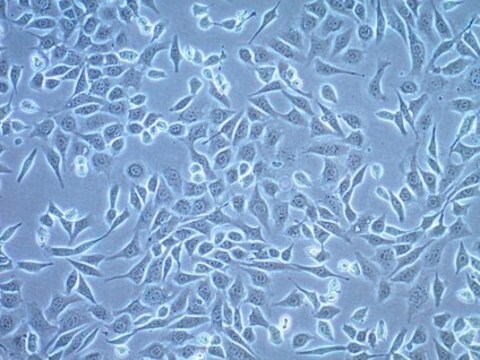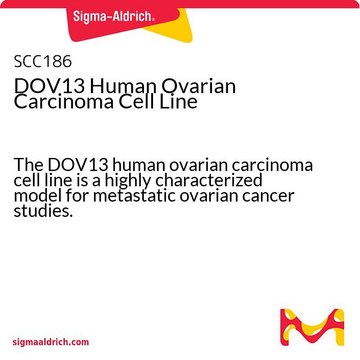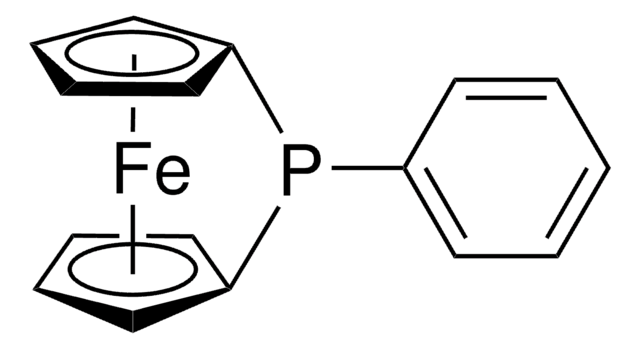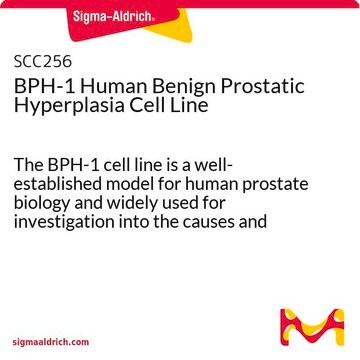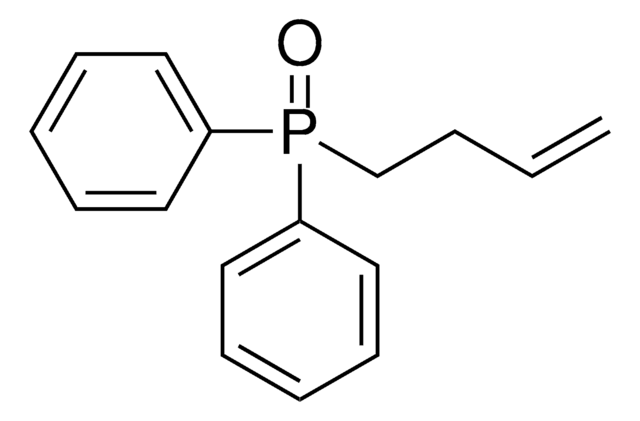SCC463
sBT-RMS Spontaneous Brain-tropic RET Melanoma-sorted Mouse Cell Line
Mouse
Synonim(y):
Q61R NRAS melanoma cell line, SK-MEL-147, human melanoma cell line, human melanoma cells, metastatic melanoma cell line
About This Item
Polecane produkty
product name
sBT-RMS Spontaneous Brain-tropic RET Melanoma-sorted Mouse Cell Line,
pochodzenie biologiczne
mouse
Poziom jakości
opakowanie
vial of ≥1X10⁶ vial
producent / nazwa handlowa
Millipore
metody
cell culture | mammalian: suitable
Warunki transportu
liquid nitrogen
temp. przechowywania
−196°C
Opis ogólny
Zastosowanie
- Each vial contains >1X106 viable cells.
- sBT-RMS cells are verified to be of mouse origin and negative for human, rat, Chinese hamster, Golden Syrian hamster, and non-human primate interspecies contamination, as assessed by a Contamination Clear panel by Charles River Animal Diagnostic Services
- Cells tested negative for infectious diseases against a Mouse Essential CLEAR panel by Charles River Animal Diagnostic Services.
- Cells tested negative for mycoplasma.
Cechy i korzyści
Opis wartości docelowych
Przechowywanie i stabilność
Inne uwagi
Oświadczenie o zrzeczeniu się odpowiedzialności
Kod klasy składowania
12 - Non Combustible Liquids
Klasa zagrożenia wodnego (WGK)
WGK 3
Temperatura zapłonu (°F)
Not applicable
Temperatura zapłonu (°C)
Not applicable
Certyfikaty analizy (CoA)
Poszukaj Certyfikaty analizy (CoA), wpisując numer partii/serii produktów. Numery serii i partii można znaleźć na etykiecie produktu po słowach „seria” lub „partia”.
Masz już ten produkt?
Dokumenty związane z niedawno zakupionymi produktami zostały zamieszczone w Bibliotece dokumentów.
Nasz zespół naukowców ma doświadczenie we wszystkich obszarach badań, w tym w naukach przyrodniczych, materiałoznawstwie, syntezie chemicznej, chromatografii, analityce i wielu innych dziedzinach.
Skontaktuj się z zespołem ds. pomocy technicznej